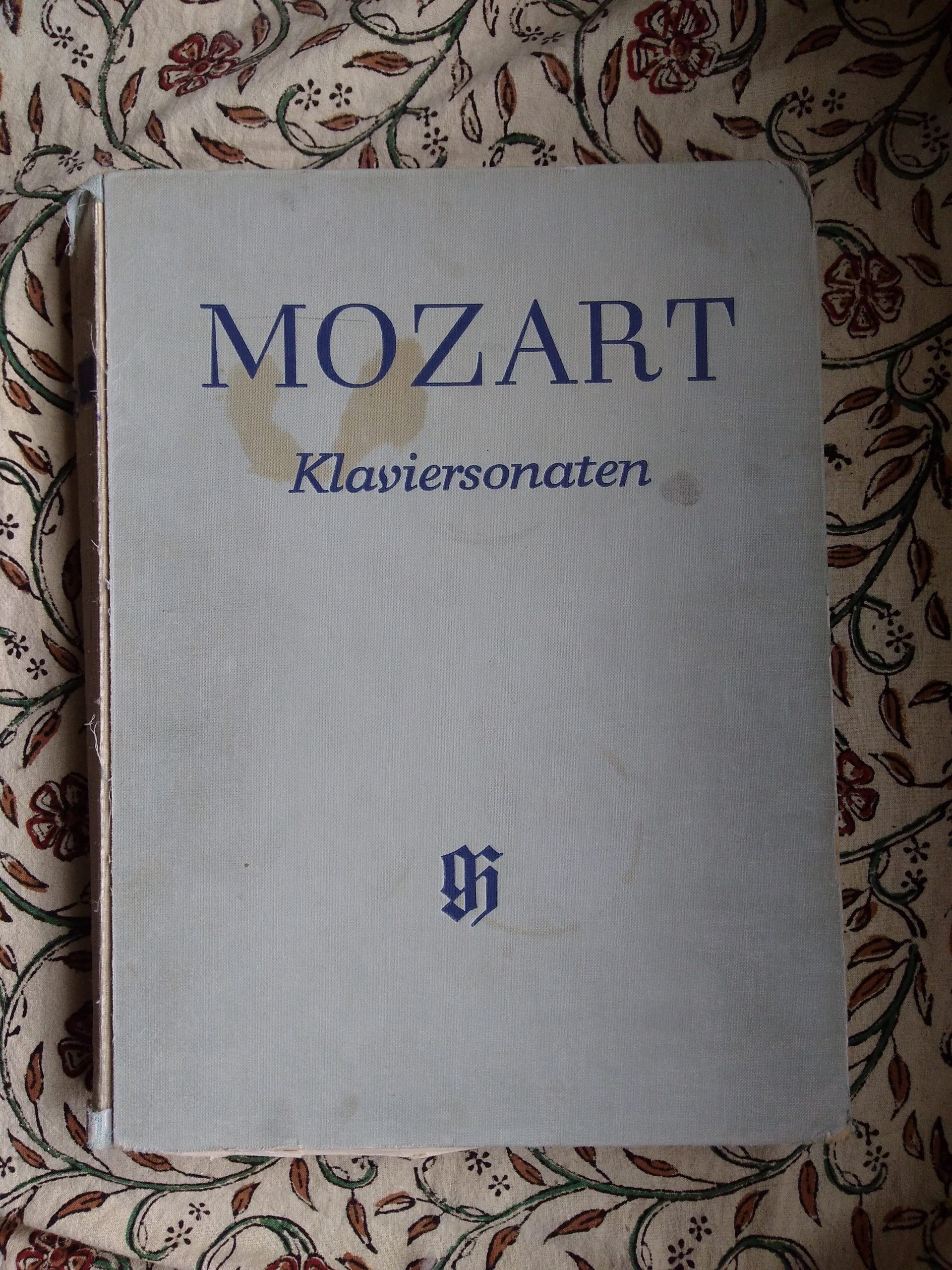 Over the past week or two, as a lockdown project, I’ve been playing through all Mozart’s piano sonatas. There are eighteen of them, mostly in three movements.
Over the past week or two, as a lockdown project, I’ve been playing through all Mozart’s piano sonatas. There are eighteen of them, mostly in three movements.
Mozart is my favourite composer. His piano writing is always of a high standard. After all, he was a famous keyboard player, and completely understood how to write for the instrument. Yet after playing through all the sonatas I couldn’t help feeling that, as a collection of pieces, they are not quite as glorious as his piano concertos.
As it happens, I’m also studying the B flat piano concerto K595 for a performance in … well, let’s leave that aside for now. No concert dates are certain at the moment.
Whenever I spend time with the B flat concerto (or any of Mozart’s mature concertos) I’m astonished by the calibre of his thinking. Time and again when he ‘proposes’ something in a musical phrase and one feels one might know an answer that could be given, or a way of continuing that would be logical, his solution is better than anything one might imagine. A surprisingly long phrase; a change of harmony that throws a new light on things. A corner turned before you were expecting it; a wonderfully simple tune popping up at a moment when the arc of the composition would seem to demand complexity.
For me, feeling awestruck by Mozart’s powers of inspiration is associated more with the concertos than the sonatas. Why would that be? He wrote in both styles throughout his career. Both tend to have the usual trilogy of movements: fast-slow-fast, or grand-lyrical-jolly. Perhaps it is that Mozart’s imagination was always triggered by contrasts in sonority – between groups of instruments in the orchestra, for example; between the sound of violin and piano, or between different types of voices in an opera.
Indeed, the piano concertos often seem like instrumental versions of opera scenes. Mozart makes beautiful play with the contrast between a lone pianist and the orchestral ‘chorus’. The nimble, silvery, quick-speaking action of the piano is contrasted with the orchestra’s heavier, richer, more velvety tones. And the psychological drama inherent in a concerto – the individual pitting their wit against the crowd – springs to life in his musical interplay.
Such dramatic contrasts are not available when writing for the piano alone. There are plenty of contrasts of texture in his sonatas, and some fabulous individual movements (especially slow movements). But when compared with the concertos there’s just a hint of flatness in the sonatas, as though the absence of an orchestra and a public stage had deprived the composer of something important.
Yet this feeling does not extend to all Mozart’s works for piano alone. Some of his stand-alone pieces – the Rondo in A minor K511, the Adagio in B minor K540 – are amongst his most sublime. So why is it that the three-movement sonatas have, at least to my ears, the tiniest flavour of duty about them?




Interesting observation about Mozart’s piano sonatas. As I worked through classical sonatas in my teens, I felt it to be a duty to try them. Haydn’s were the ones which drew me emotionally, and became my favourites. They seemed to have more dimensions, and inevitably led me to Beethoven – but I didn’t give up on Haydn! With Mozart it was a movement here and a movement there. I loved trying the A major concerto, even without the orchestra, probably because I could imagine those extra layers of sound.
I have so been enjoying this series of yours. I know what you mean about the sonatas, but I do find that some individual moments or even movements are on his highest level. And to be perfectly frank I can manage to play some of them which to a dreadful pianist like me is endearing!
It’s coincidental that I should read this post today of all days. I was just having a conversation with my dad and we had to agree to disagree. I’m a musician and I practically worship at the alter of Mozart. He is an enthusiastic amateur who “likes what he likes.” Today he was telling me that he gets annoyed by all the ‘fiddly bits’ in Mozart. This lead me to think and I came to the same conclusion as you, Susan; the concertos are masterpieces, one and all. The sonatas… how could they be described? Your answer says it all: duty!